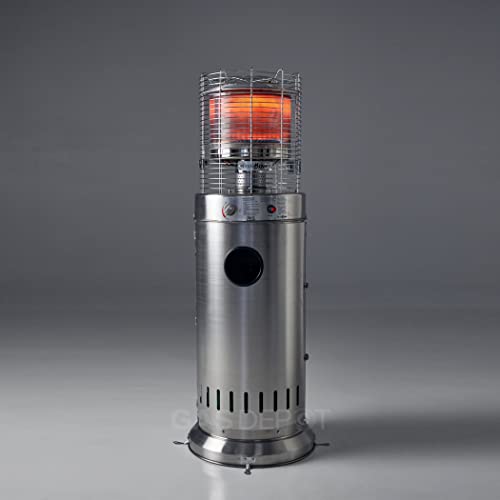Buying Gas Radiant Heaters: A Comprehensive Guide
Gas radiant heaters have gained appeal in the last few years for their effectiveness and ability to provide immediate warmth. As more homeowners and organizations search for methods to keep their areas comfortable, comprehending the features, benefits, and considerations when purchasing these heating systems can be extremely helpful. This short article dives into the intricacies of gas radiant heaters, aiding potential purchasers in making informed decisions.
What are Gas Radiant Heaters?
Gas radiant heaters are gadgets that use propane or natural gas to release heat directly into a room. Rather than heating visit our website , they warm objects and individuals in their vicinity, supplying convenience more quickly and efficiently. These heaters are popular for both indoor and outdoor settings due to their versatility and efficiency.
Key Features of Gas Radiant Heaters
- Direct Heating: Unlike traditional heaters that warm the air, gas radiant heaters provide direct heat, making them an efficient option for rapidly heating up areas.
- Portability: Many designs are readily available as portable systems, permitting them to be quickly moved from one area to another.
- Fuel Variety: Gas radiant heaters can be powered by natural gas or propane, giving users versatility based on accessibility and choice.
- Adjustable Settings: Most gas radiant heaters included adjustable heat settings, allowing users to tailor the level of warmth based upon their needs.
Benefits of Gas Radiant Heaters
- Energy Efficiency: These heaters transform gas into heat effectively, leading to lower utility costs compared to electrical heaters.
- Quick Heating: Radiant heat is felt nearly right away, making these heaters perfect for abrupt temperature drops.
- Low Maintenance: Gas radiant heaters normally require less maintenance than electrical models, making them a hassle-free choice.
- Ecologically Friendly: When powered by clean natural gas, these heaters can be a more ecologically sustainable choice compared to other heating approaches.
Kinds Of Gas Radiant Heaters
When it concerns choosing a gas radiant heater, it's important to comprehend the various types available. Below are the most common options:
- Indoor Gas Radiant Heaters: Designed for indoor spaces, these heaters are typically vented or unvented and often come with integrated safety functions.
- Outdoor Gas Radiant Heaters: Commonly used in patio areas or outdoor dining locations, these heaters are designed to hold up against the components.
- Wall-Mounted Gas Radiant Heaters: A space-saving choice, these systems are perfect for smaller sized spaces and can be equipped with various heat outputs depending upon the area's requirements.
- Freestanding Gas Radiant Heaters: These portable models can be used in various places, best for those who require versatility.
Purchasing Guide: How to Choose the Right Gas Radiant Heater
When purchasing a gas radiant heater, numerous aspects should be thought about to guarantee you pick the right design for your space:
1. Heating Capacity
- Determined in BTUs (British Thermal Units), the heater's capacity figures out just how much area it can effectively warm. Purchasers ought to assess their particular requirements based on room size.
| Room Size (sq feet) | Recommended BTUs (for Gas Radiant Heaters) |
|---|---|
| 100 - 200 | 5,000 - 10,000 BTUs |
| 200 - 400 | 10,000 - 20,000 BTUs |
| 400 - 600 | 20,000 - 30,000 BTUs |
| 600 - 800 | 30,000+ BTUs |
2. Kind of Gas
- Consider whether you will be utilizing propane or natural gas, as various heaters accommodate different fuel types.
3. Safety Features
- Try to find models geared up with security features such as automatic shut-off valves, tip-over security, and oxygen deficiency sensing units.
4. Installation Requirements
- Some heaters may need expert setup, especially vented models. Make sure to consider the costs and requirements connected with installation.
5. Mobility
- If flexibility is essential, consider portable designs that can be quickly moved from one area to another.
Installation and Maintenance
Gas radiant heaters are typically simple to set up, specifically portable models. Nevertheless, vented options may demand expert setup to guarantee they satisfy regional safety codes.
Maintenance usually includes:
- Regular cleansing to prevent dust accumulation.
- Examining gas connections and fittings for leakages.
- Making sure safety functions are practical.
Idea: Regular checks around the unit can assist extend its life expectancy and keep security.
Regularly Asked Questions (FAQs)
Q1: Are gas radiant heaters safe for indoor use?A1: Yes
, as long as they are effectively vented and equipped with needed safety functions, they can be safely utilized inside.
Q2: Can gas radiant heaters be utilized in enclosed spaces? Outdoor Space Heaters : Unvented gas heaters can posture dangers in enclosed areas due to possible suffocation or carbon monoxide accumulation. Constantly guarantee sufficient ventilation. Q3: How do I understand what size heater I need?A3: The proper size depends on the area you mean to heat. Describe the BTU chart
above to determine your requirements. Q4: What is the distinction in between propane and gas heaters?A4: The primary difference lies in their energy source
; propane is delivered through tanks, while natural gas is normally piped into homes. Q5: How can I optimize efficiency?A5: Ensure the heater is properly sized for your space, maintain it routinely, and think about utilizing it in combination
with other heating methods for optimum convenience. Gas radiant heaters can be a fantastic addition to any home or service, offering energy-efficient and fast heating solutions. By understanding the various types, features, and considerations
when buying, purchasers can make informed decisions that satisfy their heating requires. With the right option, these heaters provide convenience, reliability, and an inviting environment during colder seasons.

